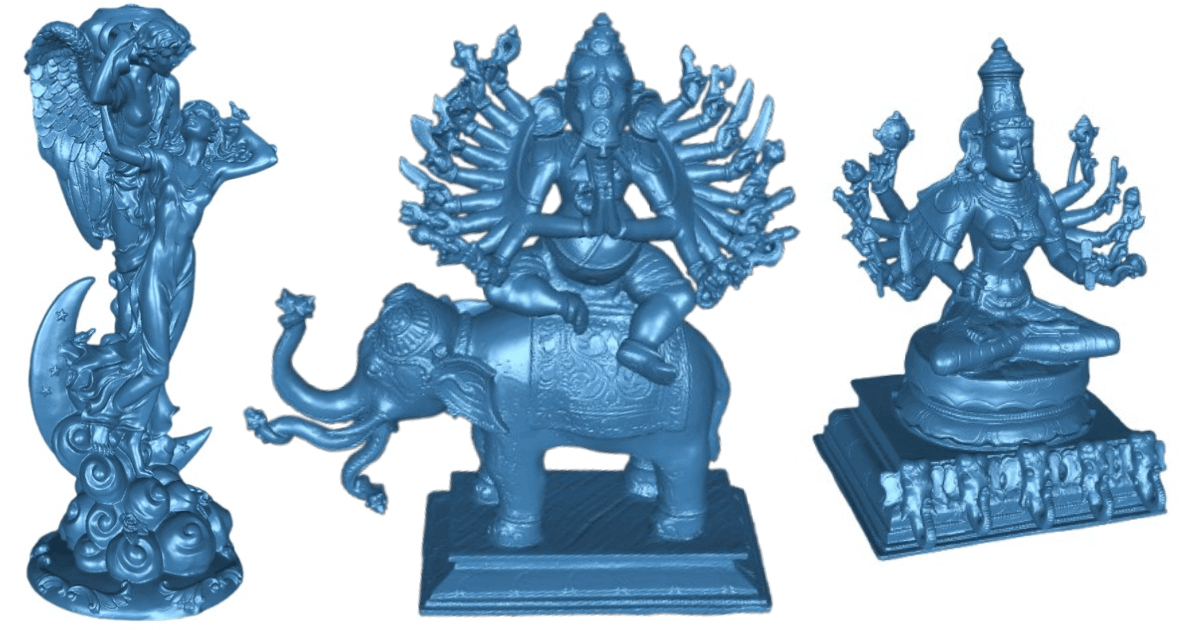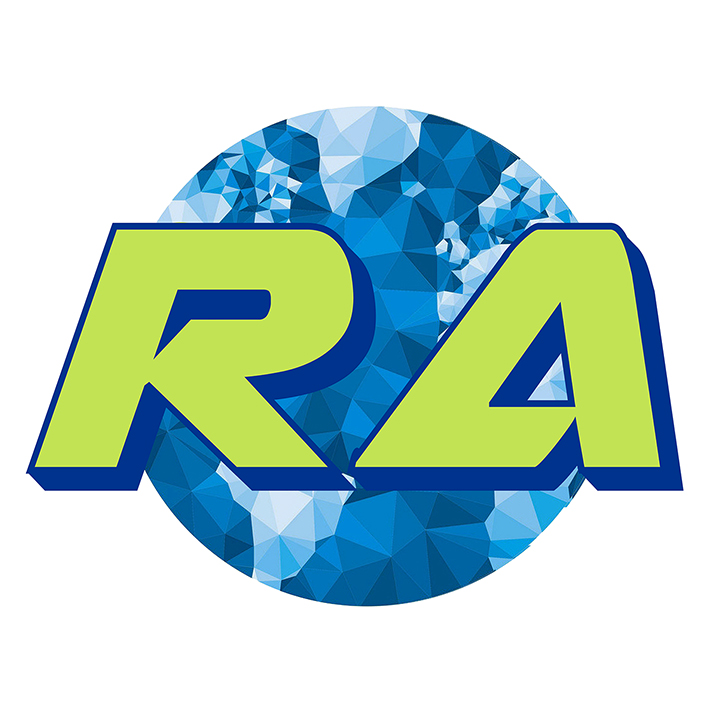3D Scanning for Human and Sculpture
What is 3D scanning for humans?
3D scanning services for humans are safe and non-invasive, utilizing low-powered, non-ionizing laser light to capture precise body scans. The scan data can be used for a variety of applications, including creating custom-fit prosthetics, orthotics, or clothing that perfectly match the individual's body shape. Additionally, 3D scan data can be used in medical imaging and surgical planning, helping healthcare professionals to diagnose and treat conditions more effectively. The technology also enables the creation of realistic avatars for virtual reality or video games, and in medical applications, it can aid in diagnosing and planning treatments for conditions such as scoliosis or craniofacial abnormalities.
What is 3D scanning for sculptures?
3D scanning for sculptures involves capturing the intricate details and shapes of a sculpture using advanced technology. This process creates a precise digital model of the sculpture, which can be used for various purposes such as preservation, restoration, replication, or artistic manipulation. 3D scanning enables artists, conservators, and curators to work with sculptures in a digital environment, allowing for detailed analysis, modification, and sharing of the digital model. The technology is useful for creating accurate replicas, documenting cultural heritage, and facilitating collaboration between artists and stakeholders.
Key Aspects of 3D scanning for humans and sculptures:
- Accuracy: Captures intricate details and shapes.
- Digital Models: Creates precise digital representations.
- Versatility: Applicable in various fields, such as art, healthcare, and fashion.
- Preservation: Enables digital preservation of sculptures and art pieces.
- Replication: Allows for accurate replication of sculptures and objects.
- Artistic Freedom: Empowers artists to manipulate and create complex digital models.
Our 3D scanning services can capture sculptures of various sizes, including large ones, with precision and accuracy. The level of detail that can be captured is impressive, with fine details like fingerprints or textures being recorded depending on the scanner's resolution. Once the scan data is captured, it can be edited and modified using 3D CAD software to refine the model or make changes. This digital data can then be used for replication purposes, such as 3D printing a replica of the sculpture or creating molds for casting. Additionally, 3D scanning plays a vital role in preserving historical sculptures by creating detailed archival records that can be used for future study and restoration, helping to safeguard our cultural heritage.
Why is 3D scanning for humans and sculptures important?
3D scanning for humans and sculpture is important because it preserves intricate details and shapes, ensuring accurate digital representations. This technology enables customization, such as custom-fit clothing and prosthetics, by capturing precise measurements. It also facilitates art and design by empowering artists to create complex digital models, manipulate, and iterate on designs. Additionally, 3D scanning supports restoration by enabling digital preservation and restoration of sculptures and art pieces. Overall, it enhances accuracy, reducing errors and improving outcomes in various fields.
What are the common challenges in 3D scanning for humans and sculptures?
3D scanning for humans and sculpture comes with several challenges. Capturing complex geometries, such as intricate details and curves, can be difficult to achieve accurately. Additionally, dealing with reflective surfaces can cause scanning errors or distortions. Managing texture and color data can also be challenging, especially for complex or intricate surfaces. Ensuring accuracy and precision requires careful calibration, setup, and scanning techniques. Scanning large or complex objects can be time-consuming and may require specialized equipment or techniques. Finally, post-processing and data cleanup are often necessary, which can be time-consuming and require expertise.

Related Services
Some related services to 3D scanning for humans and sculpture include:
- 3D Modeling: Creating detailed digital models from scanned data for various applications.
- 3D Printing: Bringing digital models to life by printing physical replicas or prototypes.
- Reverse Engineering: Analyzing and modifying existing products or designs using 3D scanning and modeling.
- Computer-Aided Design (CAD): Creating digital designs and models for various industries, including engineering, architecture, and product design.
These services often complement 3D scanning, enabling a range of applications and uses across various industries.
The Process
3D scanning is a precise technology used to capture the intricate details of objects or surfaces. The process involves three key steps: laser scanning, data collection, and data processing.
- 3D Scanning: A 3D scanner emits beams that bounce off the target object or surface. These beams measure distances and capture intricate details, including: The laser scanner calculates the distance between the scanner and the object's surface; the laser beams capture fine details, such as textures, patterns, and geometries.
- Data Collection: The scanner collects data points, creating a dense point cloud that represents the object's surface geometry. The point cloud is a collection of points; each point represents a specific location on the object's surface, and the data points contain accurate spatial information, including x, y, and z coordinates.
- Data Processing: Specialized software processes the point cloud data, generating a precise 3D digital model. The software aligns and registers the data points to create a cohesive point cloud; the software filters out noise and cleans the data to ensure accuracy; the software generates a precise 3D digital model, capturing the object's surface geometry and details.

What are the applications of 3D scanning for humans and sculptures across various industries?
- Entertainment: Creating 3D models for movies, TV shows, video games, and virtual reality experiences. It is used for virtual cinematography, character creation, and immersive gaming environments.
- Medicine: Designing custom prosthetics, implants, and wearable devices like casts and braces. 3D scanning is also used in dentistry for creating dental implants and 3D ultrasound for obstetrics.
- Architecture: Scanning buildings for precise measurements and visualizations and reverse engineering building components.
- Construction and Engineering: Site modeling, documenting historical sites, quantity surveys, and inspecting equipment Reverse engineering is also a key application in this field
- Art and Design: Rapid prototyping, reverse engineering, and studying complex arrangements to create new designs. 3D scanning helps designers work with intricate parts and shapes
- Forensics: Creating accurate 3D models of crime scenes, accidents, and evidence for documentation and analysis
- Fashion: Designing custom-fit clothing and creating 3D avatars for e-commerce and virtual try-on
- Healthcare and Prosthetics: Creating custom prosthetics, orthotics, and implants for patients
- Heritage Preservation: Scanning and preserving historical artifacts and monuments for future generations
Why Choose RA Global?
At RA Global, our 3D scanning services stand out for their exceptional accuracy and precision, ensuring that every detail is captured with utmost clarity. With a fast and efficient scanning process, we deliver high-quality results without compromising on speed. Our services cater to a wide range of industries, from art and heritage preservation to medical and industrial applications. Backed by a team of experts and state-of-the-art technology, we provide unparalleled 3D scanning solutions that meet the unique needs of our clients.
- Expertise: We have extensive knowledge and industry experience in 3D scanning solutions, ensuring high-quality services.
- Industry-leading technology: We utilize advanced scanners and design tools to deliver accurate results.
- Onsite and studio scanning options: Our portable scanners allow flexibility in scanning locations, catering to diverse client needs.
- Customized solutions: We offer tailored packages to meet specific client requirements.
RA Global 3D scanning services bring precision and detail to human and sculpture scanning, preserving art and heritage for generations to come. Our 3D scanning services for humans create highly detailed and accurate digital models.
Contact us to learn more about how we can deliver the best possible results for your manufacturing.
Frequently Asked Questions
What is 3D scanning for humans?
3D scanning of humans is a technology that captures the shape, size, and proportions of a person's body in three dimensions, creating a detailed digital model for various applications.
How does it work?
A laser scanner projects a beam of light onto the object, and the scanner measures the distance to the surface at various points, creating a point cloud.
Can I scan a large sculpture?
Yes, 3D laser scanners can be used to scan objects of various sizes, including large sculptures.
Is it safe to scan humans?
Yes, 3D laser scanning is generally considered safe for humans, as the laser light used is low-powered and non-ionizing.
Can I modify the scan data?
Yes, the digital scan data can be edited and modified using CAD software to refine the model or make changes.

